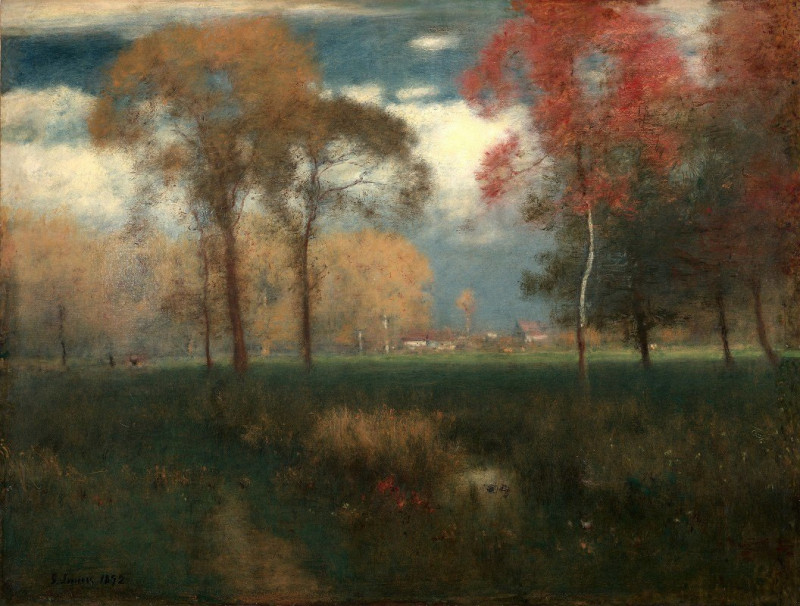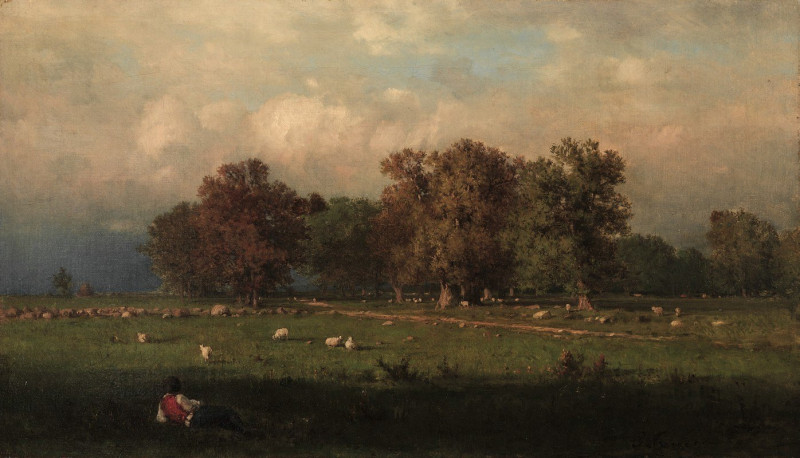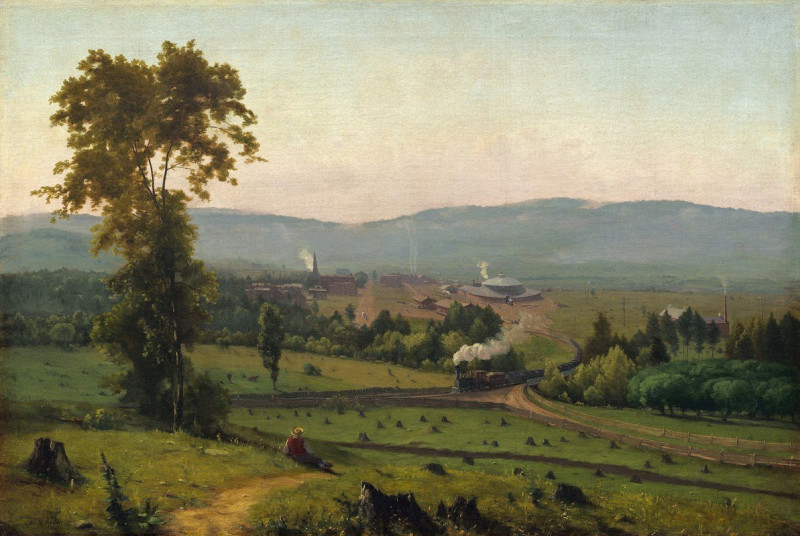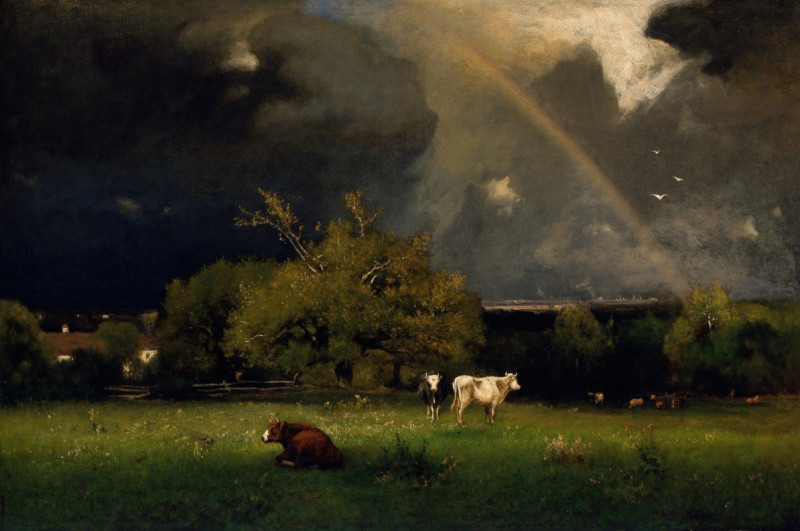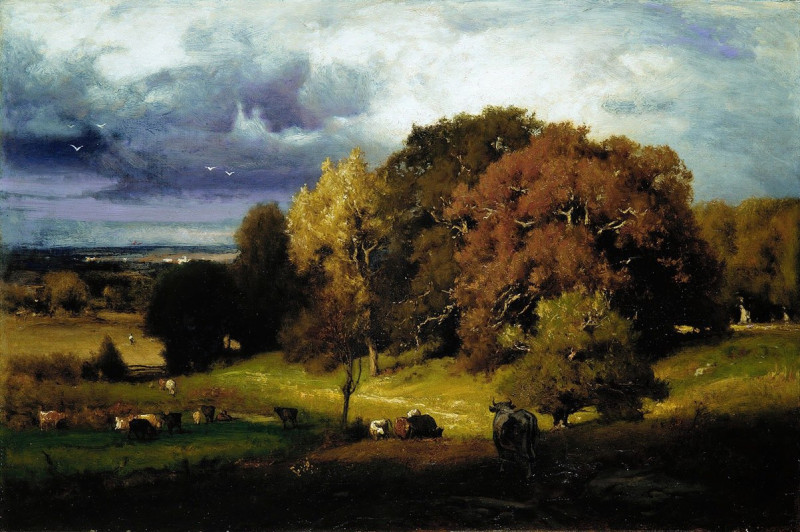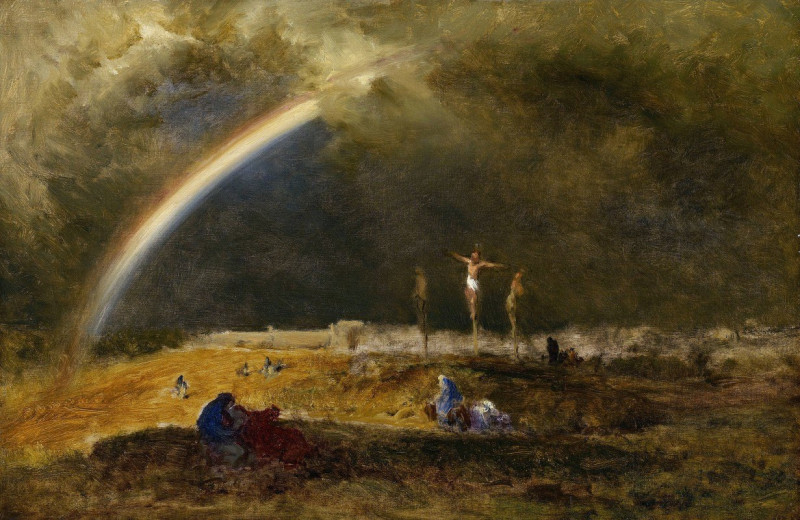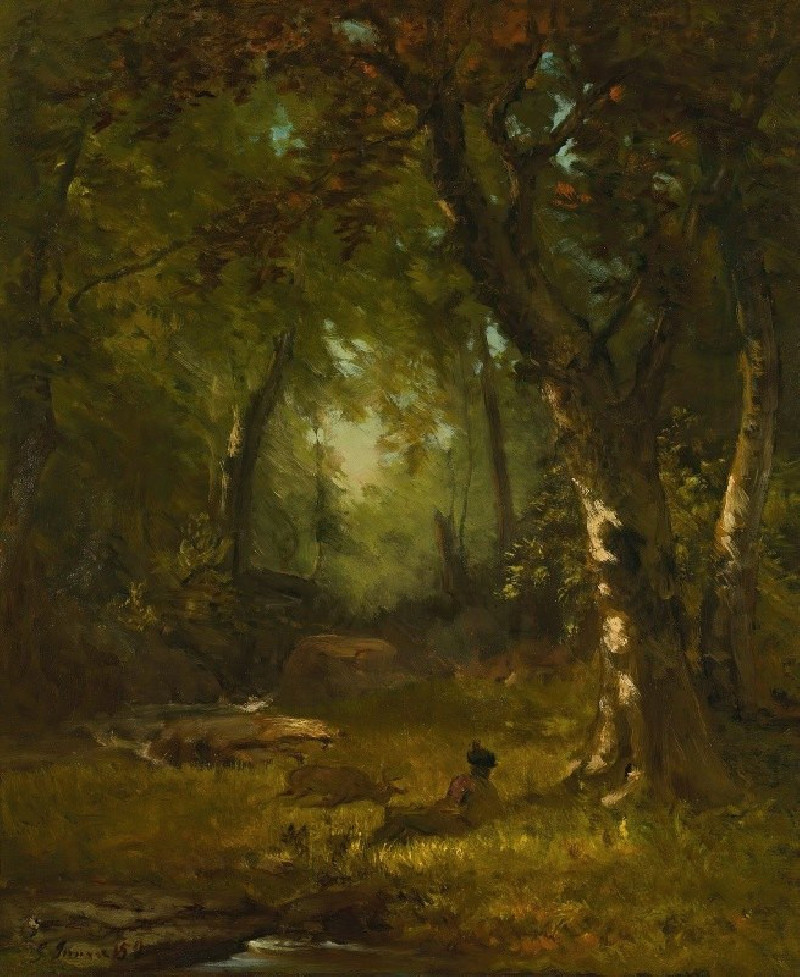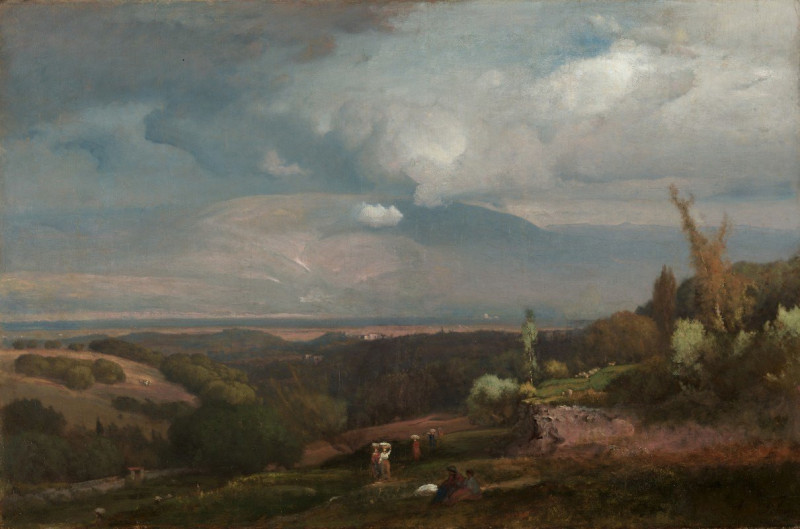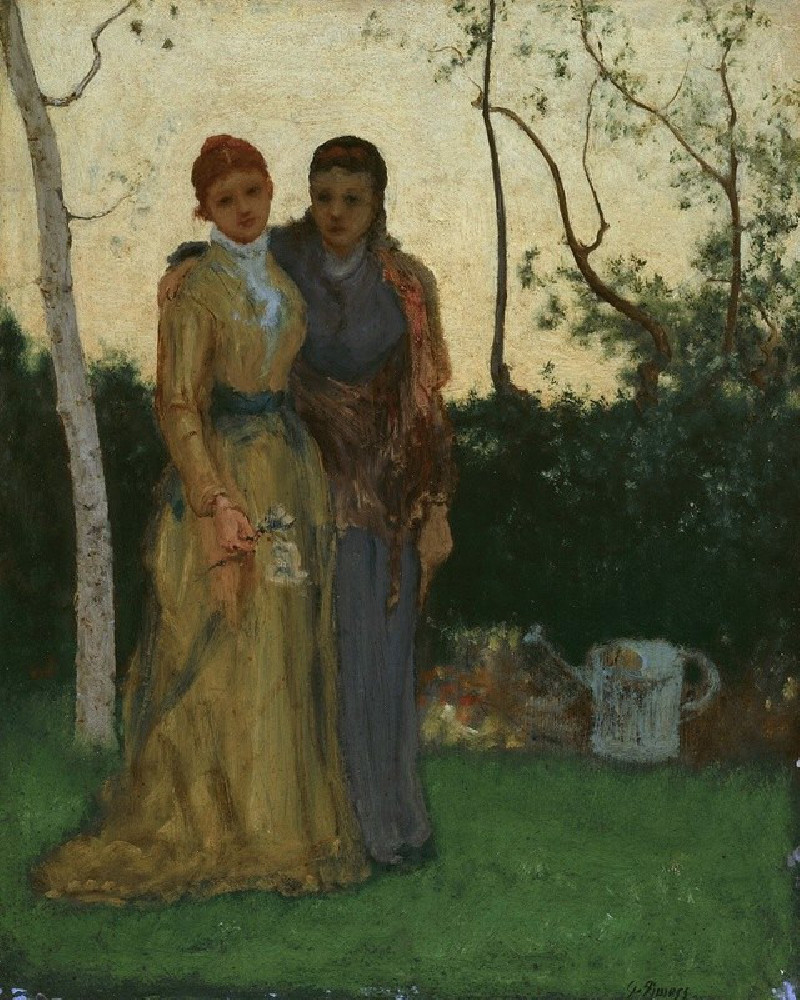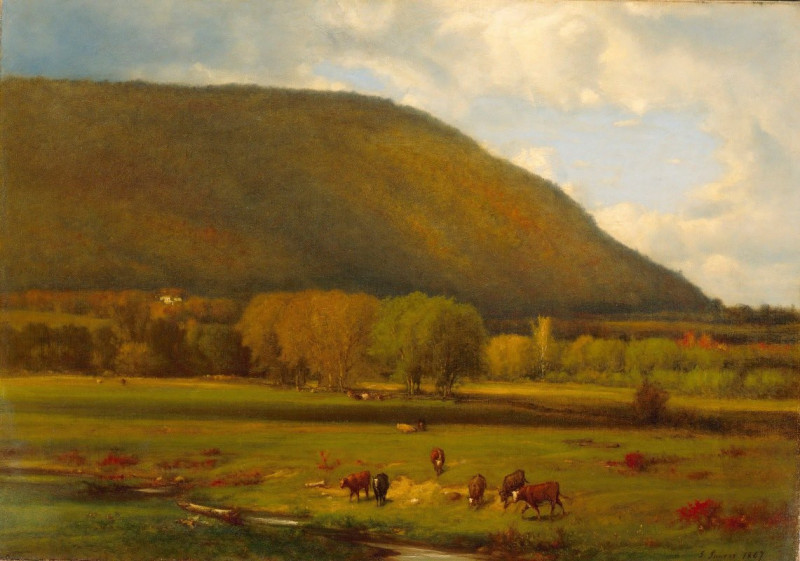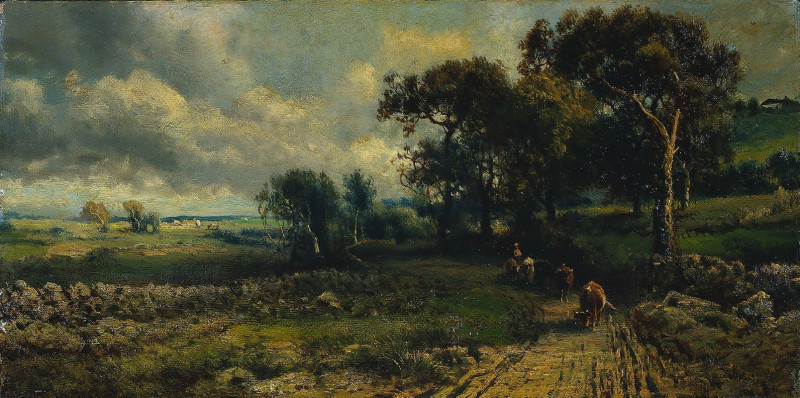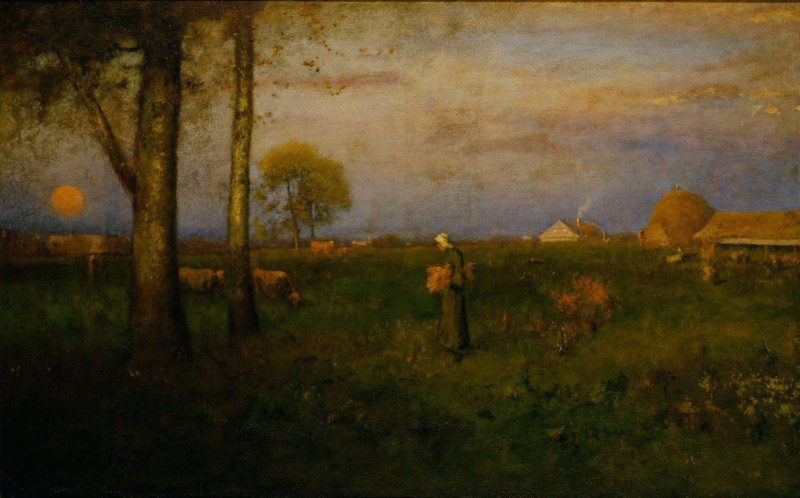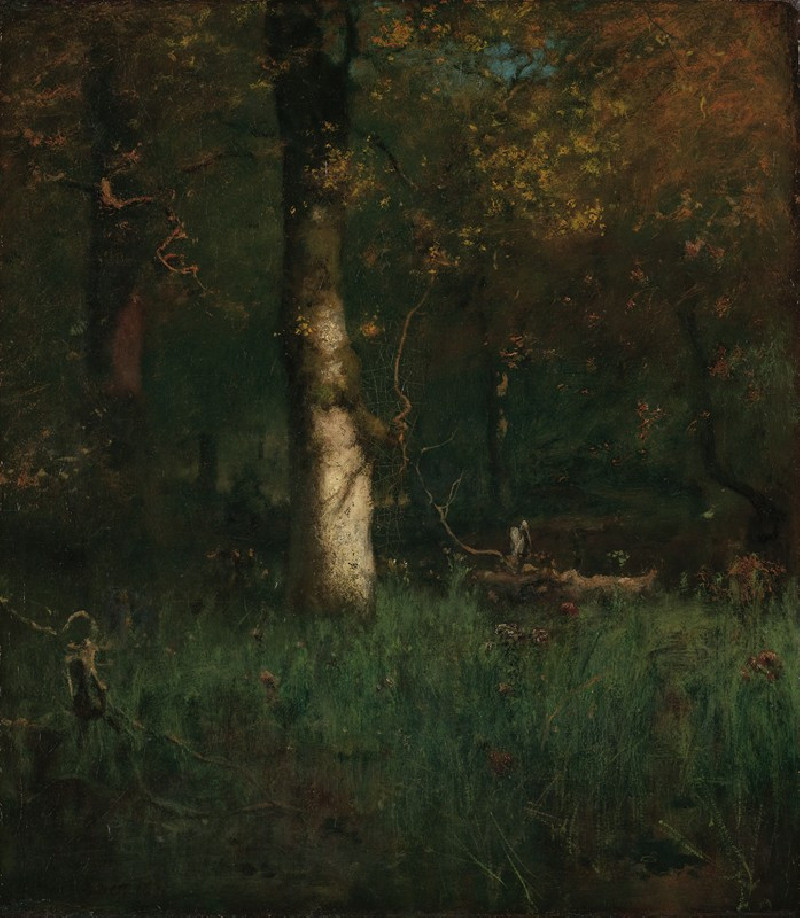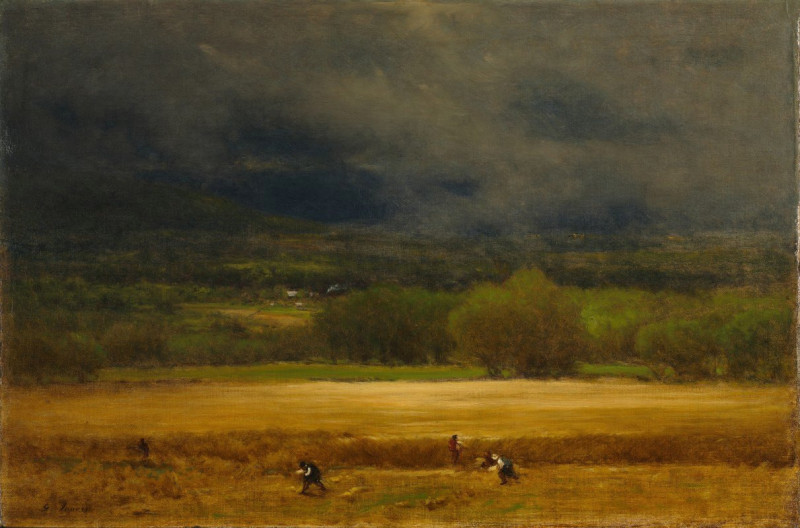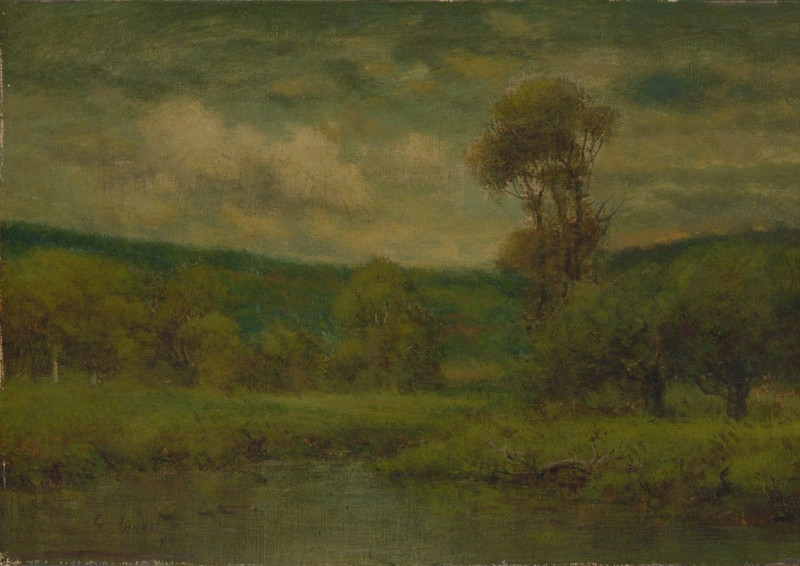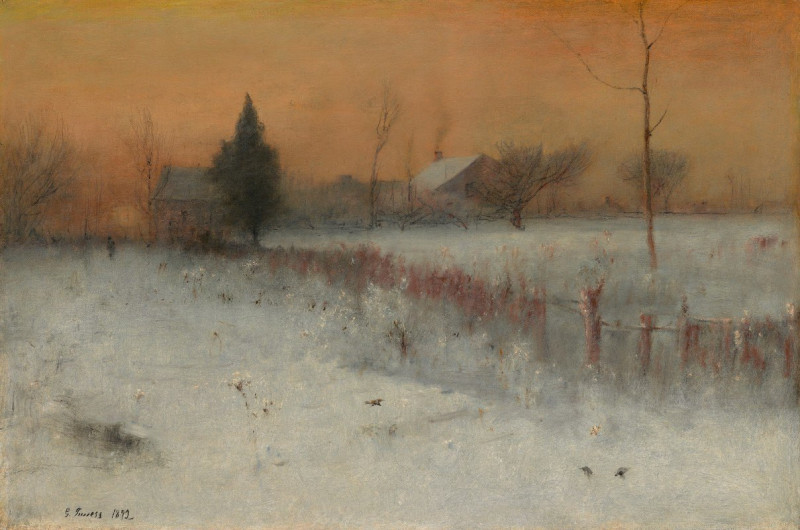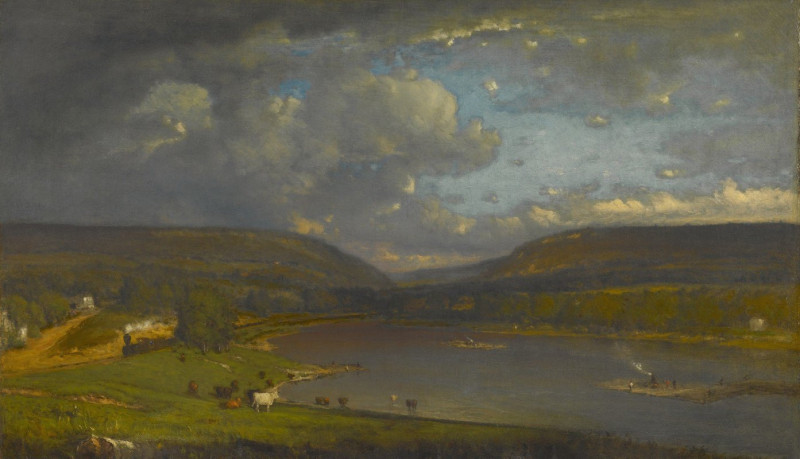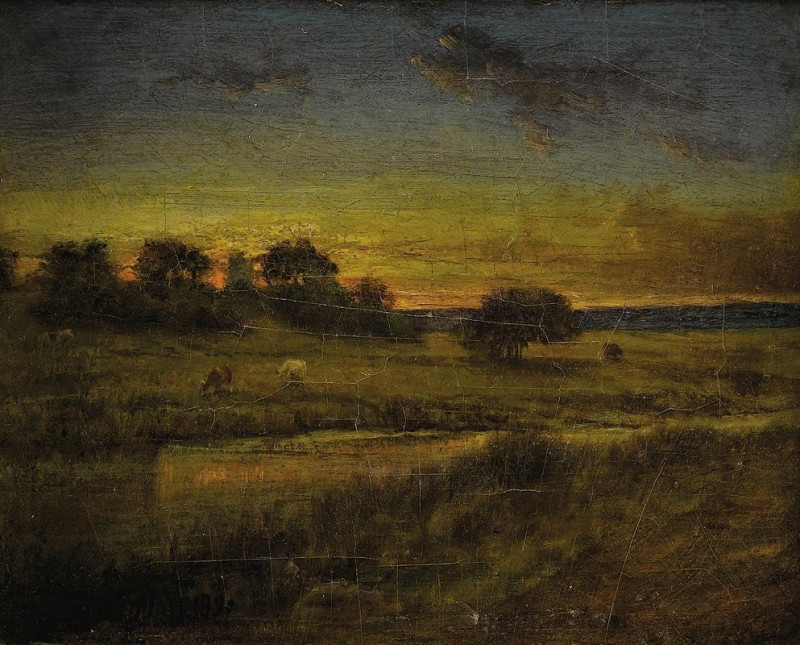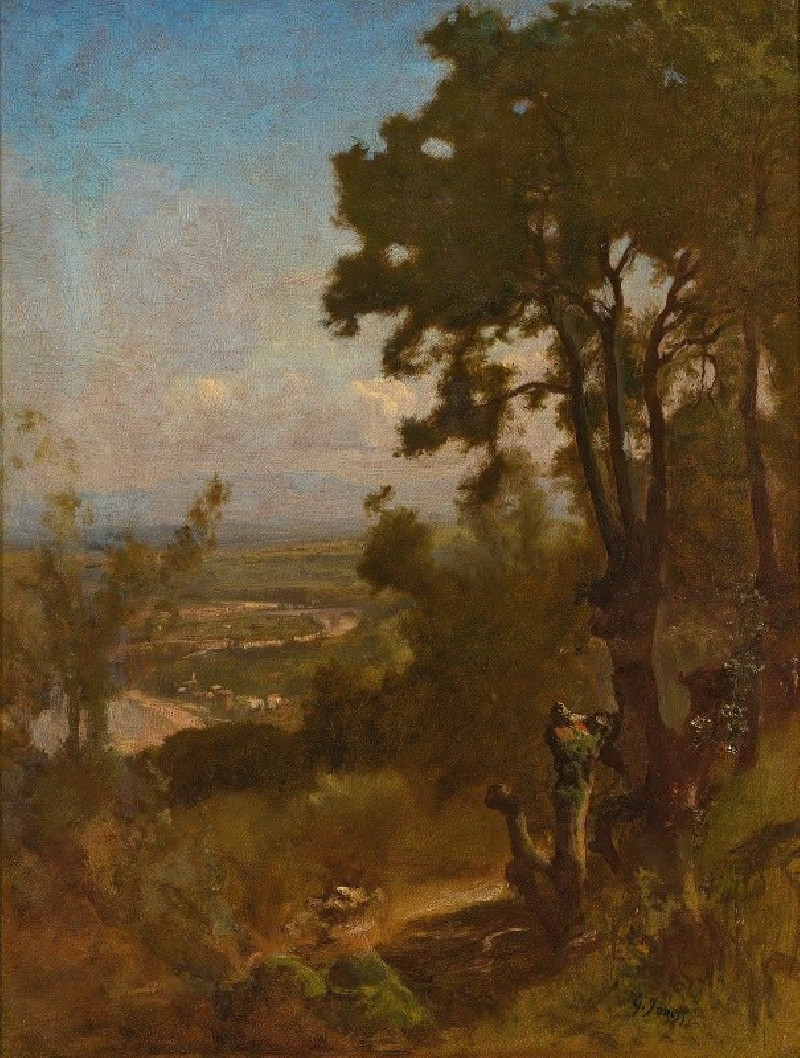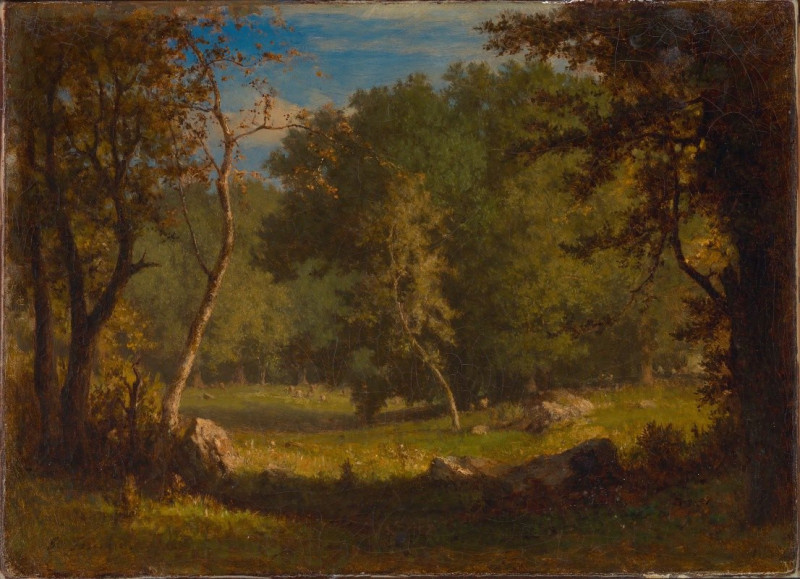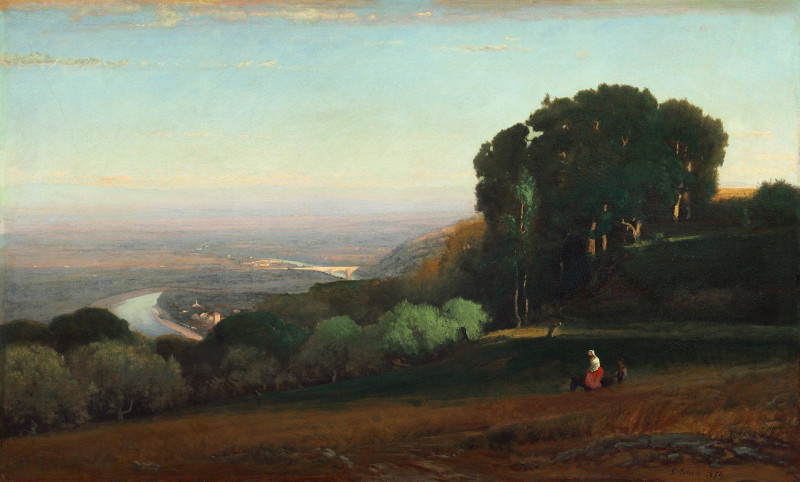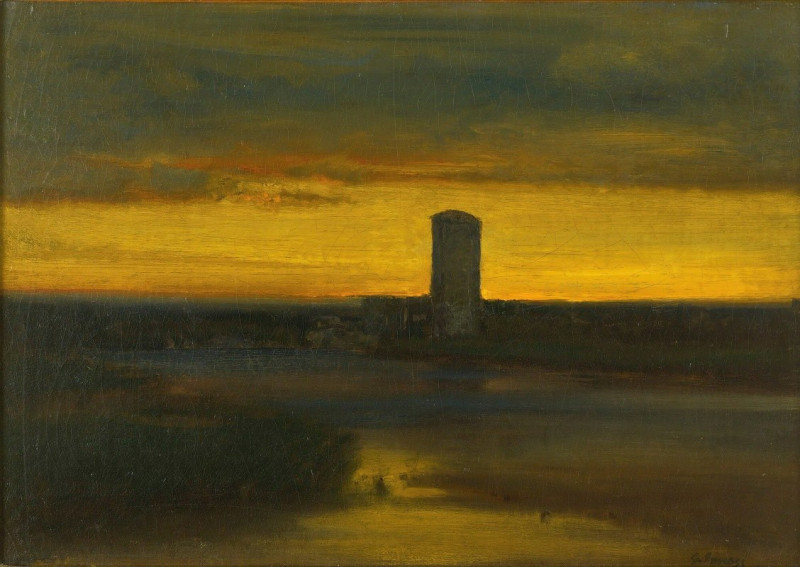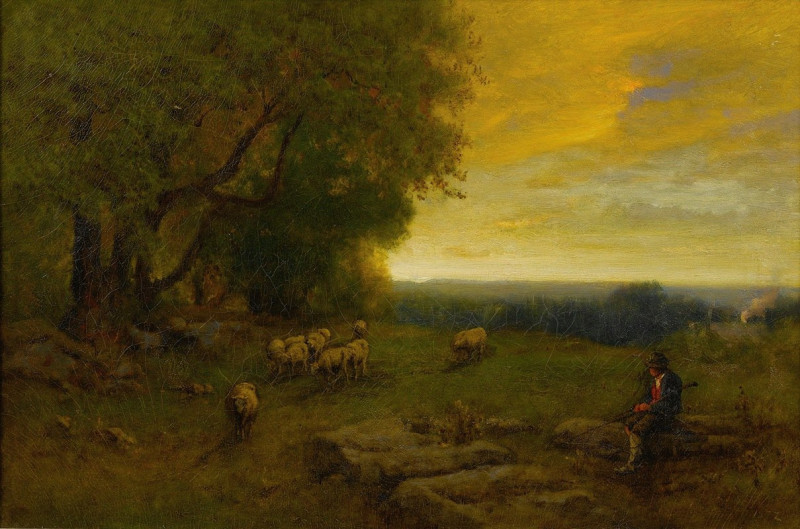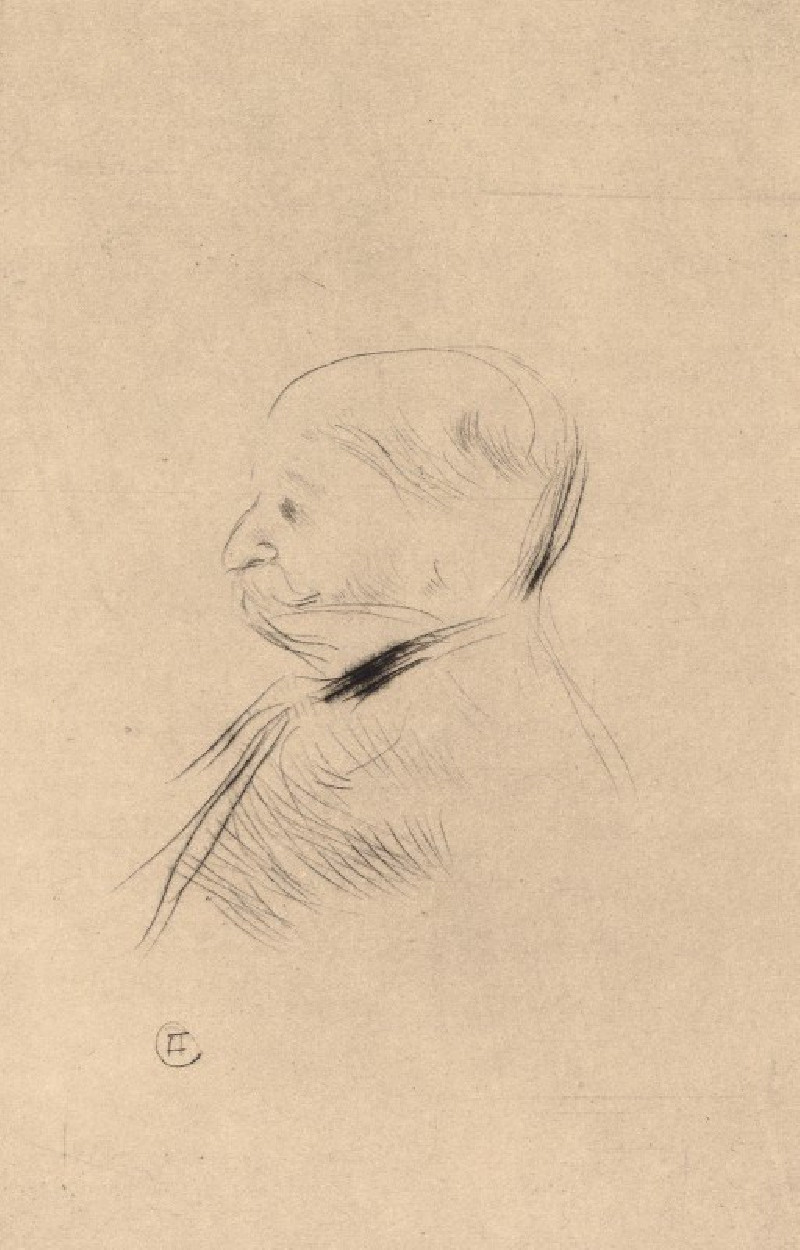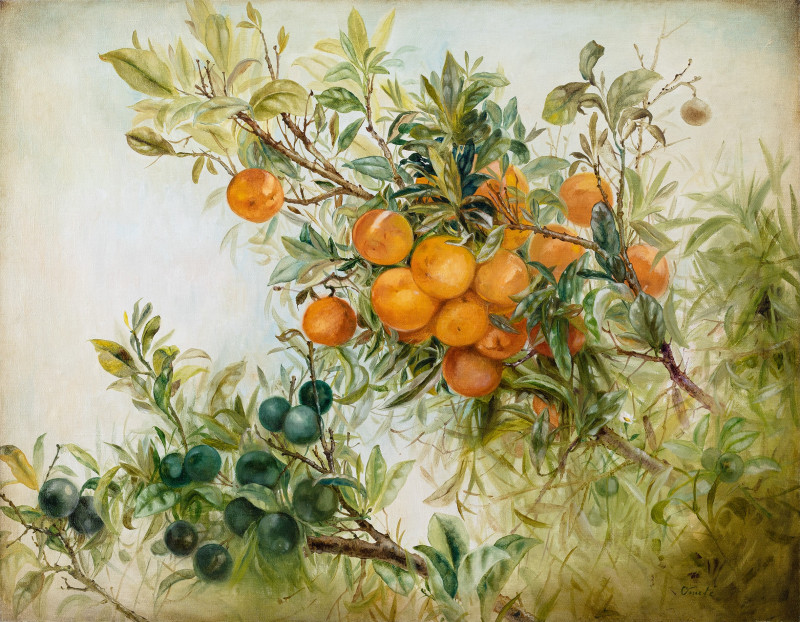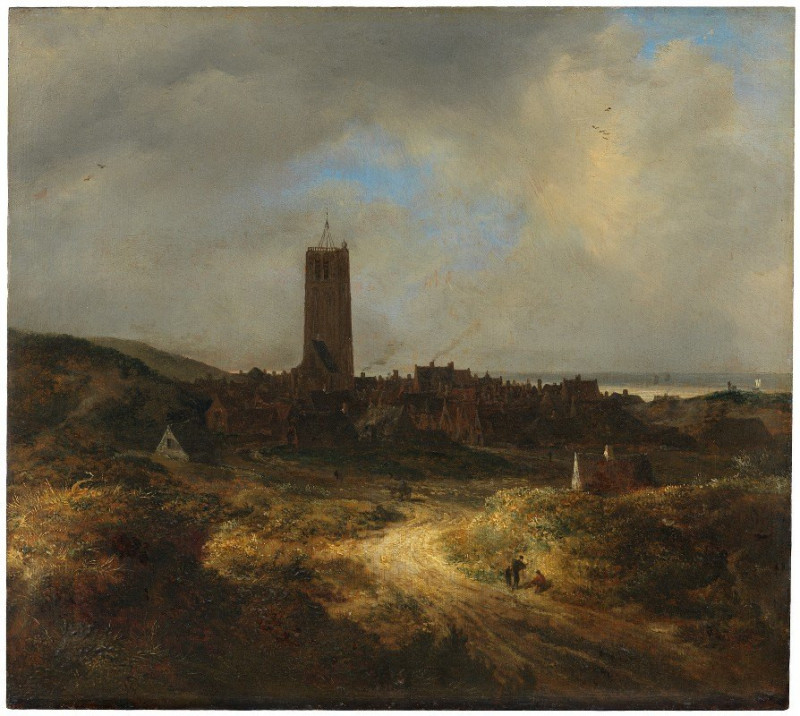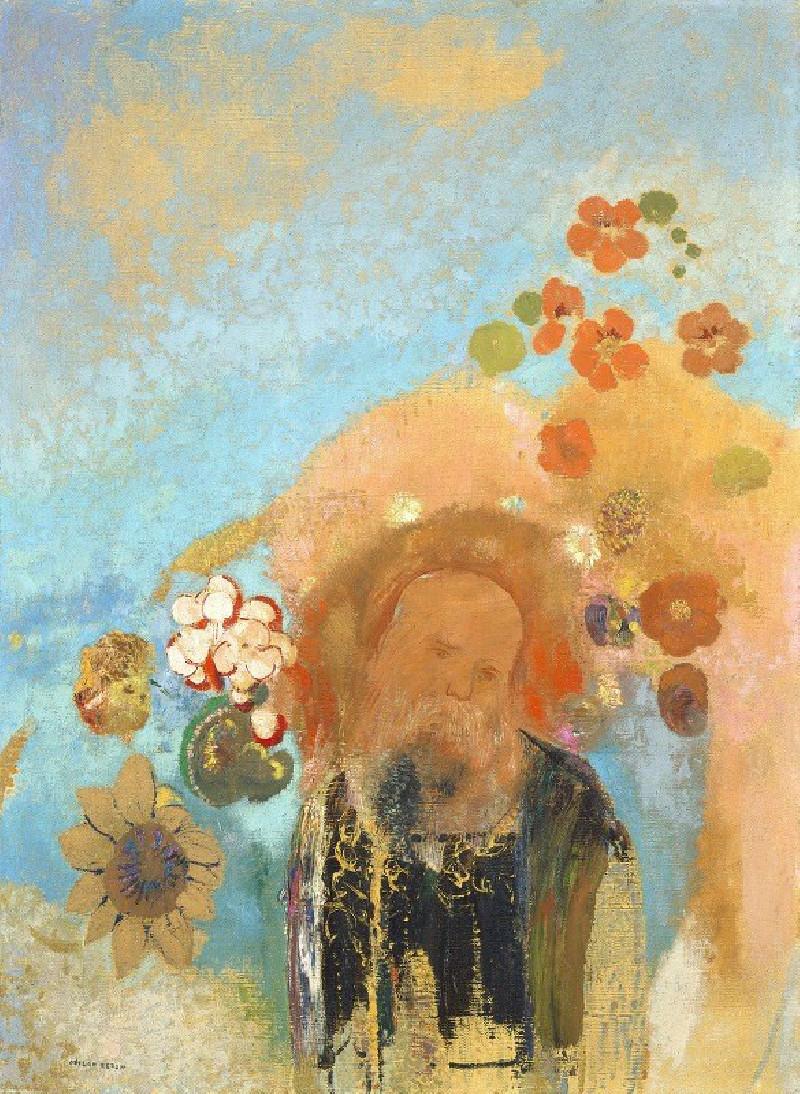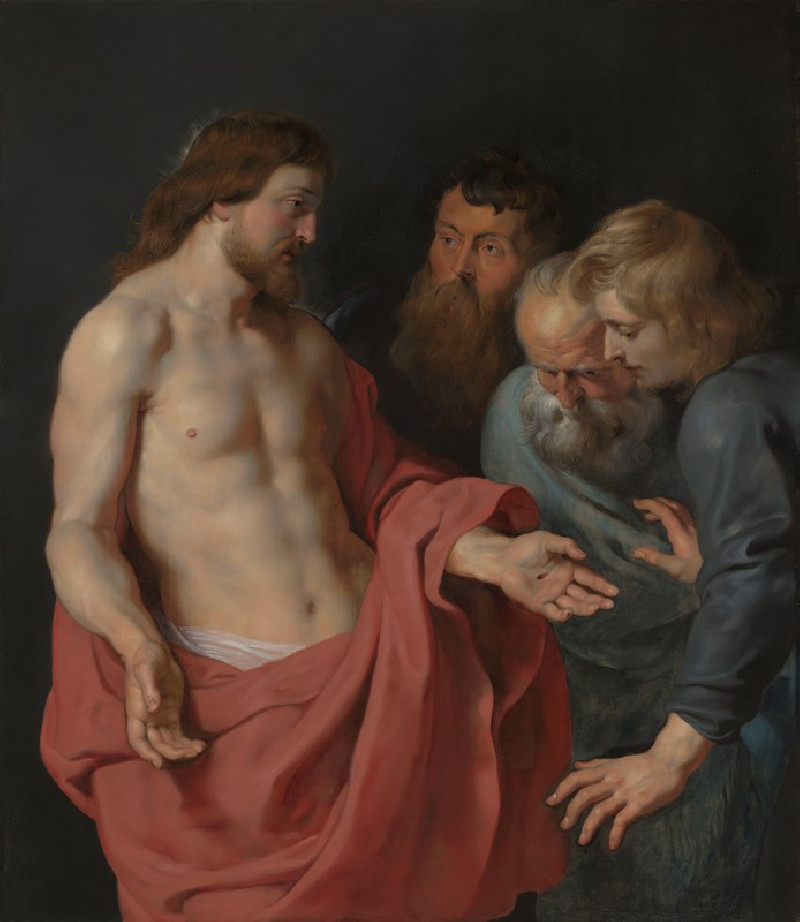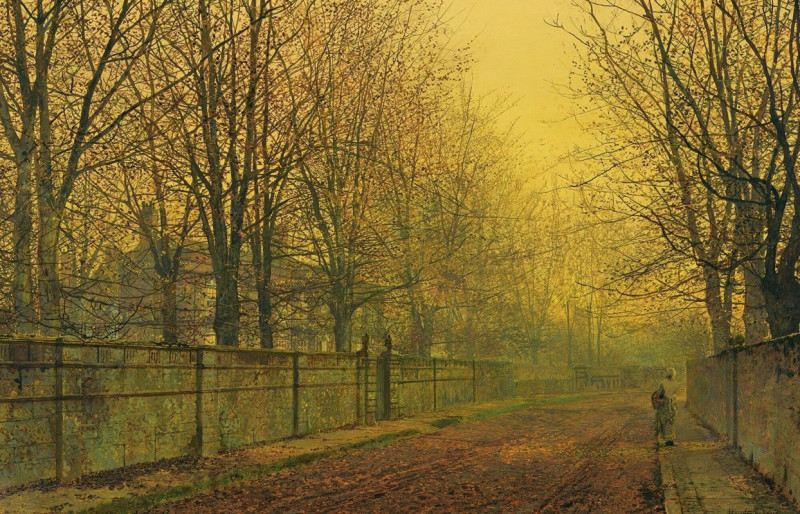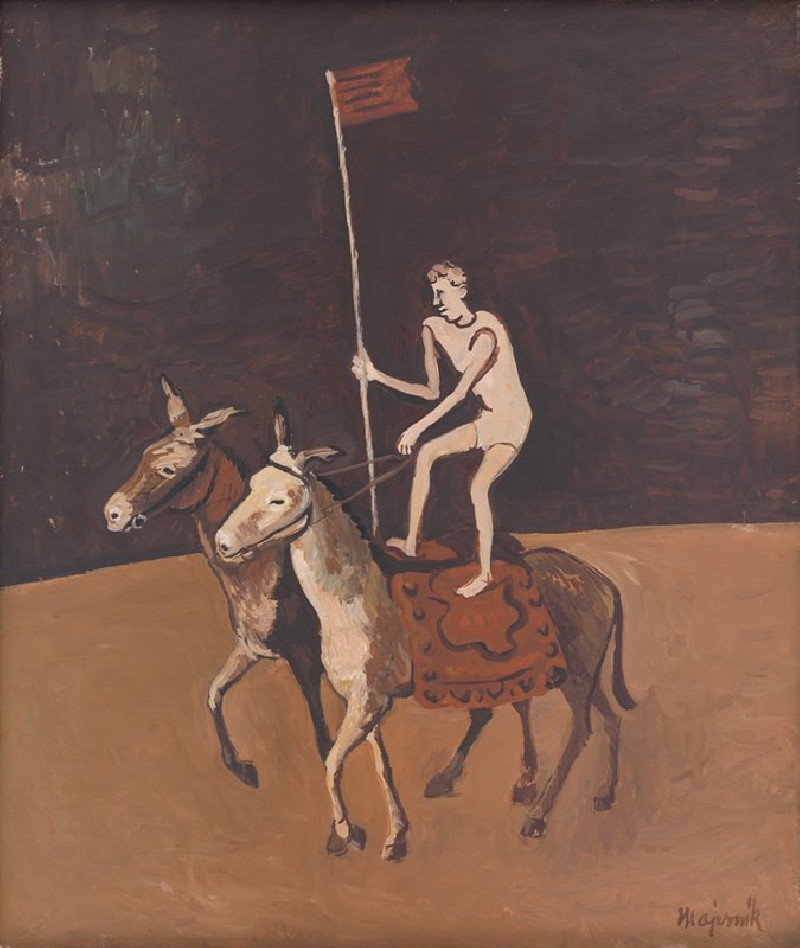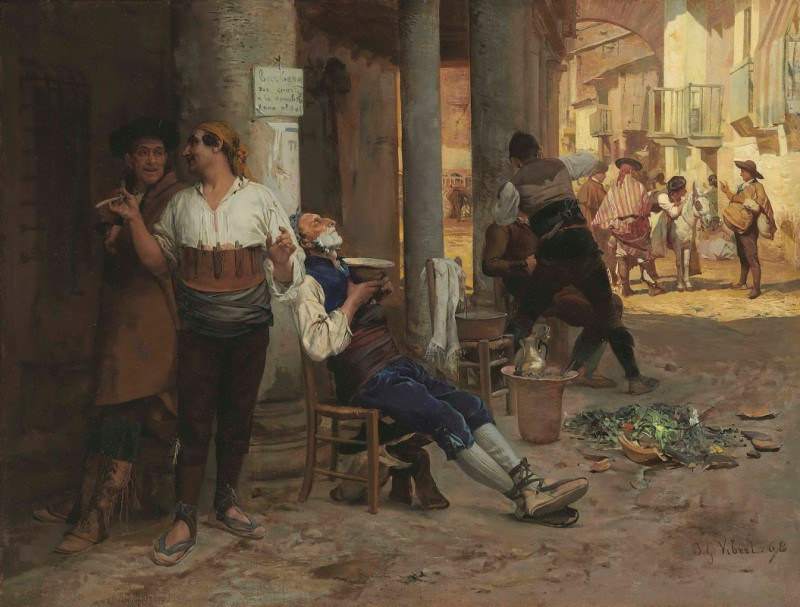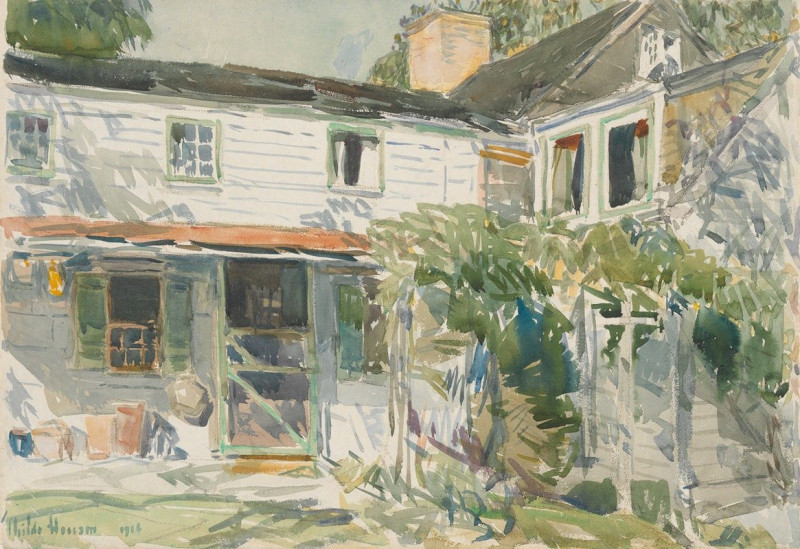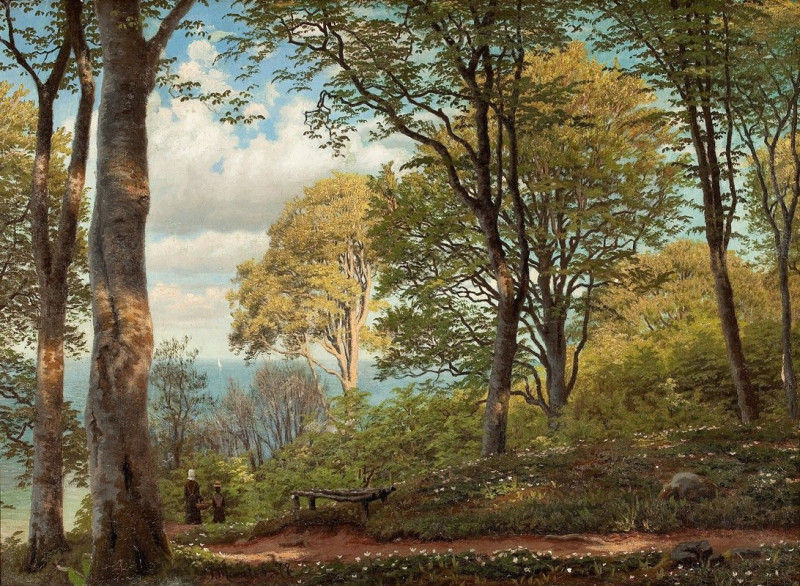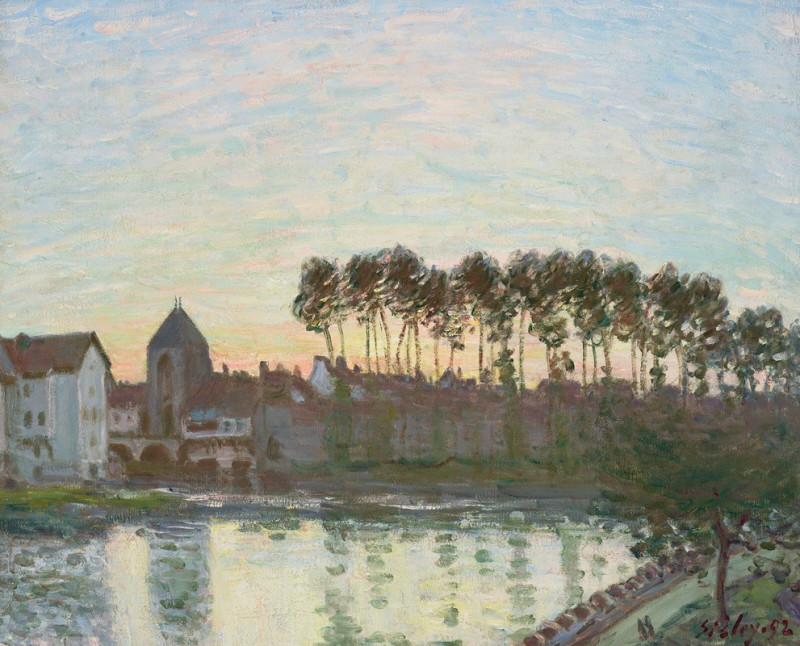Delaware Water Gap (1861)
Technique: Giclée quality print
Recommended by our customers
More about this artwork
George Inness' painting, "Delaware Water Gap" from 1861, offers a breathtaking view encompassing both the tranquility and the dynamic beauty of nature. Set against the backdrop of the Delaware River landscape, the painting captures the serene moment just after a rainfall, as evidenced by a splendid rainbow arching in the hazy sky. This atmospheric phenomenon draws the viewer’s eyes across the panoramic river scene framed by lush foliage and distant mountains.On the banks of the river sits a small settlement, its buildings nestled into the landscape, suggesting a harmonious coexistence with nature. The foreground of the painting is full of life, with cows grazing peacefully and a figure, perhaps lost in thought or simply enjoying the fresh moistened air, resting seated upon the ground. The river, calm and reflective, conveys an underlying stillness, yet the small boats manned by figures suggest a quietly active human presence within the natural world.Inness, known for his mastery in portraying light and mood, imbues this scene with a sense of optimism reflected by the rainbow—a symbol of hope and renewal. The soft, diffused lighting enhances the overall ethereal quality, inviting the viewer into a moment of contemplation and inward reflection.This work is quintessential Inness, embodying his passion for landscapes where the divine seems to permeate through natural phenomena, here inviting the observer to stand still, observe, and connect with the deeper spiritual essence of the environment.
Delivery
Returns
George Inness (May 1, 1825 – August 3, 1894) was a prominent American landscape painter.
Now recognized as one of the most influential American artists of the nineteenth century, Inness was influenced by the Hudson River School at the start of his career. He also studied the Old Masters, and artists of the Barbizon school during later trips to Europe. There he was introduced to the theology of Emanuel Swedenborg, which was significant for him; he expressed that spiritualism in the works of his maturity (1879–1894).


